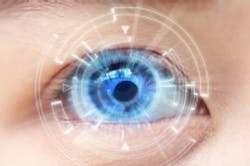Bio-inspired vision company receives $15 million funding led by Intel
Chronocam, a developer of biologically-inspiredvision sensors and computer vision solutions has raised $15 million in Series B financing led by lead investor Intel Capital, along with iBionext, Robert Bosch Venture Capital GmbH, 360 Capital, CEAi and Renault Group.
A recent start-up company based in Paris, France, Chronocam was founded by an international group of scientists, entrepreneurs, and venture capital professionals whose exclusive goal is to develop, productize, and commercialize the quickly-maturing disruptive technology of neuromorphic event-driven vision, which is described as a brain-inspired way of acquisition and processing visual information for computer and machine vision.
Chronocam wants to become the “leading computer vision solution provider for autonomous navigation and connected objects by unlocking a paradigm shift in vision sensing and processing inspired by the human eye.” The company develops CMOS image sensors for both 3D cameras, the CCAM 3D, and a smaller, embeddable camera, the CCAM(eye)oT, according to a company presentation. Additionally, Chronocam develops vision sensors based on the same technology.
Each pixel of a CCAM sensor array individually controls its own sampling based on the scene content at which it is looking. In an ideal case, notes Chronocam in its technical paper, an image sensor samples parts of the scene that contain fast motion and changes at high sampling rates, and slow changing parts at slow rates, all at the same time, with the sampling rate going to zero if nothing changes. In order to do this, using one common sampling rate (frame rate) for all pixels is no longer an option. Furthermore, as the information about where in a scene, and at which speed, things change and move is usually not known beforehand, one needs as many sampling rates as there are pixels in the sensor, and let each pixel’s sampling rate adapt to the part of the scene it sees.
To accomplish this requires abandoning a common frame rate and putting each pixel in charge of adapting its own sampling rate to the visual input it receives. Thus, each pixel defines the timing of its own sampling points in response to its visual input by reacting to change of the amount of incident light. As a consequence, the entire sampling process is no longer governed by a fixed (artificial) timing source, but by the signal to be sampled itself, or more precisely by the variations over time of the signal in the amplitude domain. The output generated by a camera such as this is no longer a sequence of images, but a time-continuous stream of individual pixel data, generated and transmitted conditionally, based on changes happening in the scene, according to Chronocam.
"The advent of bio-inspired event-driven vision has started introducing a paradigm shift in machine vision based on the asynchronous acquisition and processing of visual information beyond Nyquist," states the conclusion of the company’s technical paper.
Withthe investment, Chronocam will continue to build a team to accelerate product development and commercialize its products, as well as expand into key markets, including the US and Asia. In addition to autonomous navigation, the company says the technology can be deployed into biomedical, scientific, industrial, and automotive imaging applications.
"Conventional computer vision approaches are not well-suited to the requirements of a new generation of vision-enabled systems," said Luca Verre, CEO and co-founder of Chronocam. "For example, autonomous vehicles require faster sensing systems which can operate in a wider variety of ambient conditions. In the IoT segment, power budgets, bandwidth requirements and integration within sensor networks make today’s vision technologies impractical and ineffective."
He added, "Chronocam’s unique bio-inspired technology introduces a new paradigm in capturing and processing visual data, and addresses the most pressing market challenges head-on."
View more information onChronocam.
Share your vision-related news by contactingJames Carroll, Senior Web Editor, Vision Systems Design
To receive news like this in your inbox, click here.
Join ourLinkedIn group | Like us on Facebook | Follow us on Twitter
Learn more: search the Vision Systems Design Buyer's Guide for companies, new products, press releases, and videos
About the Author

James Carroll
Former VSD Editor James Carroll joined the team 2013. Carroll covered machine vision and imaging from numerous angles, including application stories, industry news, market updates, and new products. In addition to writing and editing articles, Carroll managed the Innovators Awards program and webcasts.
